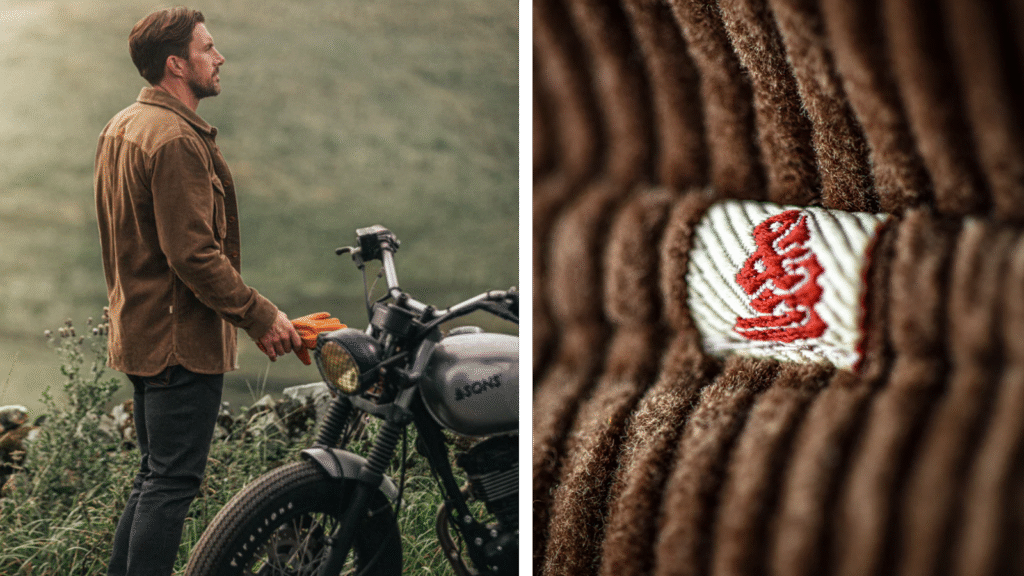It’s Shacket Season: Check Out Four Of The Best From Criquet Shirts
Nov 7, 2025Black Tie Dress Code for Men: Formal Attire Guide
- Jul 16, 2023
- 0 Comments
1250

Regarding formal events, nothing exudes timeless elegance and sophistication quite like the black tie dress code for men. Whether attending a black-tie wedding, a gala, or an awards ceremony, adhering to the black tie dress code is essential to ensure you look your best and make a lasting impression.
In this comprehensive guide, we will walk you through everything you need to know about black tie attire, from the history and evolution of the dress code to the essential elements of a black tie outfit, and tips on carrying off the look with style. So, let’s unlock the secrets of black tie fashion.
The Origins of Black Tie
The black tie dress code has a rich history that dates back to the late 19th century. It emerged as a response to the rigidity of traditional formal wear, offering a more relaxed and comfortable alternative for evening events. The dress code gained popularity when King Edward VII of England, known for his impeccable style, replaced his evening tailcoats with a silk smoking jacket and matching trousers in 1885. This innovation marked the birth of the dinner jacket, a precursor to the modern tuxedo.
In the United States, the black tie dress code gained traction through its adoption by the esteemed Tuxedo Club in New York. The club’s members, seeking a more fashionable and less formal alternative to tails, embraced the dinner jacket as their attire of choice. From there, the black tie dress code spread across the globe and became synonymous with elegance and refinement.
the Black Tie Dress Code for Men
The black tie dress code represents a formality that surpasses the standard suit and tie ensemble. It requires a specific set of garments and accessories; each carefully selected to create a cohesive and polished look. When attending a black tie event, it’s crucial to adhere to these guidelines to ensure you strike the perfect balance between style and tradition:
The Essential Elements of a Black Tie Outfit
To truly grasp the requirements of the black tie dress code, let’s break down the critical components of a typical black tie outfit:
1. The Jacket: Elevating Style with Satin Lapels
The centerpiece of a black tie ensemble is the jacket, commonly known as a dinner jacket or tuxedo jacket. It is essential to choose a jacket that exudes elegance and fits impeccably. The traditional dinner jacket features satin lapels, buttons, and pockets, adding a touch of sophistication to the overall look. There are two main types of lapels to choose from:
Peak Lapel: This style features lapels that point upward toward the shoulders, creating a sharp and angular look. Peak lapels are considered more formal and are often seen on double-breasted jackets.
Shawl Lapel: The shawl lapel is characterized by a smooth, rounded lapel without any notches or peaks. Its sleek and sophisticated appearance makes it a popular choice for single-breasted jackets.
Select a high-quality fabric like barathea wool in black or midnight blue when selecting your jacket. The fabric should have a subtle sheen, enhancing the elegance of the overall ensemble.
2. The Shirt: Crisp & Classic
A white dress shirt is a non-negotiable element of the black tie dress code. Look for a shirt with a clean, crisp appearance and a turned-down collar (not winged) to accommodate the black bow tie.
The shirt should have a double-cuffed design, requiring cufflinks for a polished finish. Consider opting for a shirt with a Marcella front, a geometric cotton weave that adds texture and depth to the ensemble.
3. The Trousers: Sleek & Refined
Black trousers are the foundation of a black tie outfit. Ensure that your trousers are well-tailored, pressed, and fitted to your body. For an extra touch of sophistication, consider trousers with a single row of braid or satin fabric along the outer seam of each leg. This subtle detail adds a touch of elegance and sets the trousers apart from normal formal wear.
4. The Shoes: The Finishing Touch
Regarding footwear for a black tie event, black patent leather shoes are the go-to choice. Their sleek and glossy appearance complements the formal nature of the dress code. Alternatively, you can opt for velvet slippers, but remember that they add a touch of flair and are best reserved for those who want to make a bold style statement.
5. The Tie: Bow Ties Reign Supreme
As the name suggests, the black tie dress code requires a black bow tie. This classic accessory adds a touch of sophistication and serves as the outfit’s focal point. While it is possible to experiment with different colors, it is generally recommended to stick to black to maintain the timeless elegance of the black tie look.
Remember, white bow ties are reserved for the even more formal white tie dress code.
6. The Waistcoat: Optional Elegance
A waistcoat and vest are optional additions to a black tie outfit. If you choose to wear a waistcoat, it should match the jacket in color and fabric. However, it is essential to note that a waistcoat should never be worn with a cummerbund, as both serve a similar purpose of creating structure and enhancing posture.
7. The Accessories: Detailing with Finesse
To complete your black tie look, pay attention to the finer details and select the right accessories:
- Pocket Square: A neatly folded pocket square adds a touch of refinement to your jacket. Opt for a white pocket square made of silk or linen for a timeless and classic look.
- Cufflinks: French cuffs, which require cufflinks, are a hallmark of black tie attire. Choose cufflinks that complement your overall style, whether simple and elegant or more intricate and eye-catching.
- Lapel Pin: While not essential, a lapel pin can subtly express your style or pay homage to a particular cause or organization. Choose a pin that adds a touch of personality without overpowering the overall look.
- Socks: Black socks are a must for a black tie event. Ensure they are long enough to cover your legs when sitting down, avoiding unsightly skin exposure.
- Watch and Jewelry: Keep jewelry to a minimum, opting for a classic timepiece and perhaps a pair of cufflinks. The focus should be on the overall ensemble rather than flashy accessories.
Now that we have covered the essential elements of a black tie outfit let’s explore the intricacies of different variations within the black tie dress code, including color options, alternative styles, and tips for achieving the perfect fit.
Exploring Black Tie Variations
While black is the traditional choice for a black tie outfit, some variations allow for some creative expression and personalization. Let’s delve into the different options available within black tie attire.
1. Midnight Blue: A Subtle Departure from Black
While black is the standard color for a black tie outfit, midnight blue is a sophisticated alternative that adds a touch of uniqueness to your ensemble. In certain lighting conditions, midnight blue can appear darker than black, creating an intriguing visual effect.
Opting for a midnight blue dinner jacket can add a subtle twist to the classic black tie look, making it a popular choice for those seeking a touch of individuality.
2. White Dinner Jackets: Embracing Warm-Weather Formality
White dinner jackets are a stylish alternative for black tie events held in warmer climates or during the summer months. They exude a sense of timeless elegance and have been popularized by iconic figures such as James Bond. Pair a white dinner jacket with black trousers, a white dress shirt, and a black bow tie to maintain the necessary formality.
3. Dark Suits: The Black Tie Optional Dilemma
When the dress code is “black tie optional” or “black tie preferred,” you can choose between a tuxedo and a dark suit. While a tuxedo is a traditional and preferred choice for black tie events, a well-tailored dark suit can also be acceptable, provided it meets specific criteria.
Opt for a suit in a dark color, such as navy or charcoal gray, and pair it with a crisp white dress shirt and a black bow tie. However, remember that a suit should be considered a step below the level of formality achieved with a classic tuxedo.
Achieving the Perfect Tailored Fit
No matter the variation you choose within the black tie dress code, the key to a successful black tie look lies in the fit of your garments. Ill-fitting attire can detract from the overall elegance and impact of your outfit. To ensure a flawless fit, consider the following:
1. Tailoring: The Art of Refinement
Investing in professional tailoring is crucial to achieving the perfect fit for your black tie outfit. A skilled tailor can make adjustments to enhance your silhouette and ensure that each garment drapes effortlessly on your body. From the jacket to the trousers, every element should be tailored to your unique measurements, allowing for ease of movement and a polished appearance.
2. Proportions: Striking the Right Balance
In black tie attire, proportions play a significant role in achieving a well-balanced look. The jacket lapels should complement the width of your shoulders, neither overpowering nor appearing too narrow.
The trousers should have a sleek and tapered silhouette, complementing the overall silhouette of the outfit. Pay attention to the length of the trousers, ensuring that they break cleanly on the shoes without excessively bunching or dragging on the ground.
3. Personalization: Adding a Touch of Individuality
While the black tie dress code is steeped in tradition, there is still room for personalization and subtle touches of individuality. Consider adding accessories that reflect your style, such as a unique lapel pin or a pocket square with a delicate pattern. These small details can set you apart while maintaining the overall elegance and formality of the black tie look.
Black Tie Fashion Faux Pas: Avoiding Style Pitfalls
Even when adhering to the black tie dress code, certain pitfalls should be avoided to ensure a flawless and sophisticated appearance. Let’s explore some typical black tie fashion faux pas and how to avoid them.
1. Inappropriate Color Choices
While variations within the black tie dress code allow for some flexibility, it is essential to exercise caution when experimenting with color. Stick to classic black or midnight blue for your jacket and trousers, avoiding bright or unconventional hues that may detract from the formal nature of the event.
2. Improper Footwear
Black patent leather shoes are the standard choice for black tie events. Avoid wearing casual or colorful footwear, such as sneakers or loafers, as they will undermine the overall elegance and formality of the outfit. Remember, simplicity and refinement are essential for black tie footwear.
3. Incorrect Shirt Choice
A white dress shirt is a fundamental element of a black tie ensemble. Opt for a white dress shirt with a crisp appearance and a turndown collar, as wing collars are reserved for the even more formal white tie dress code. Avoid colored or patterned shirts, as they can compromise the elegance of the overall look.
4. Neglecting Accessories
Accessories play a crucial role in completing a black tie outfit. Pay attention to details like cufflinks, pocket squares, and lapel pins. Avoid excessive or flashy accessories that may distract from the overall sophistication of the ensemble. Remember, less is often more when it comes to black tie fashion.
Final Words
Mastering the black tie dress code is an art that combines tradition, sophistication, and personal style. By understanding the history and evolution of black tie attire and the essential elements of a black tie outfit, you can confidently navigate any black tie event and leave a lasting impression.
Remember to prioritize fit and tailoring, embrace subtle variations within the dress code, and avoid common fashion faux pas. With these guidelines in mind, you are on your way to becoming a black tie connoisseur. So, embrace the elegance and refinement of black tie fashion, and make a statement at your next formal event.
Publisher: Source link







